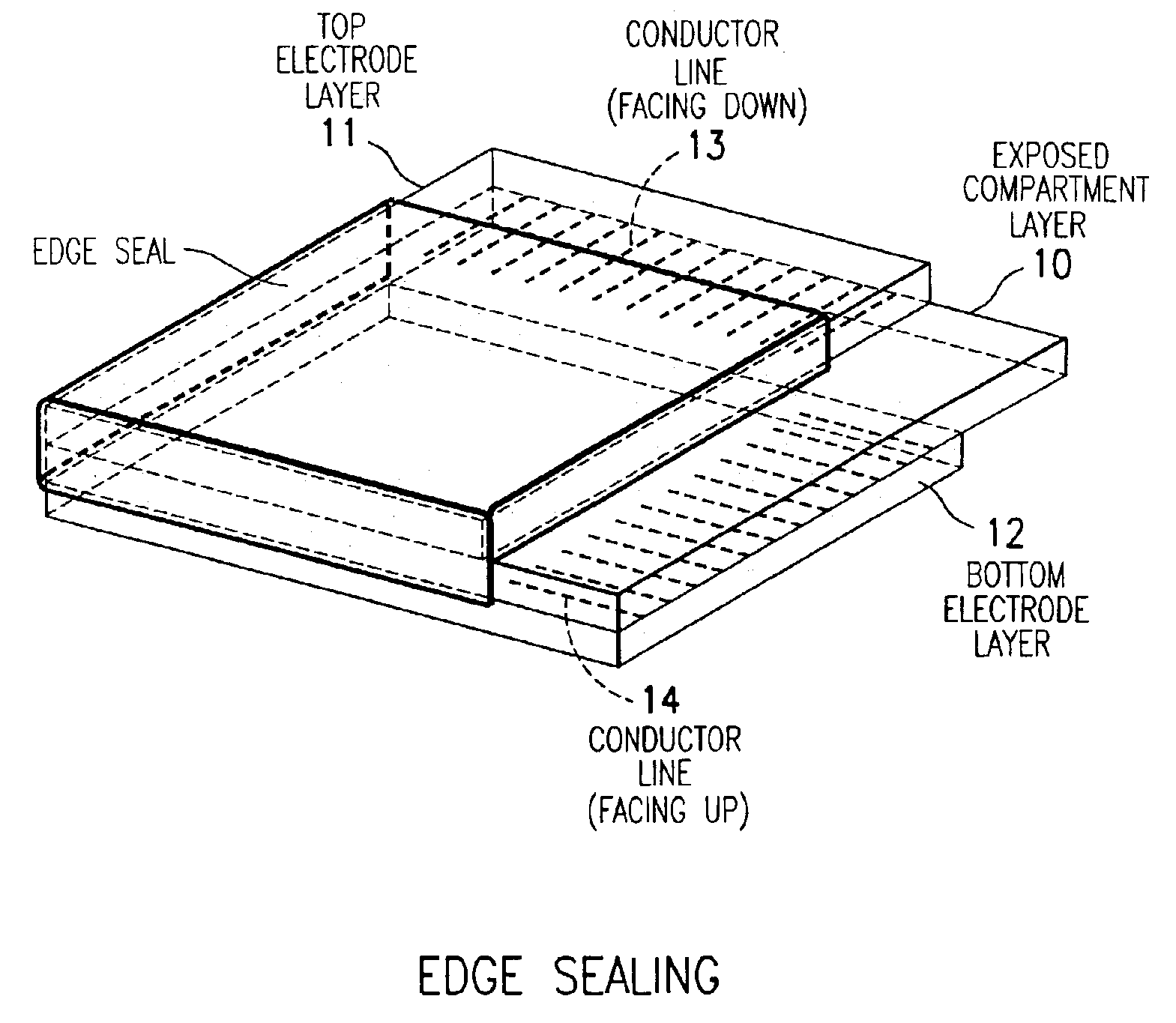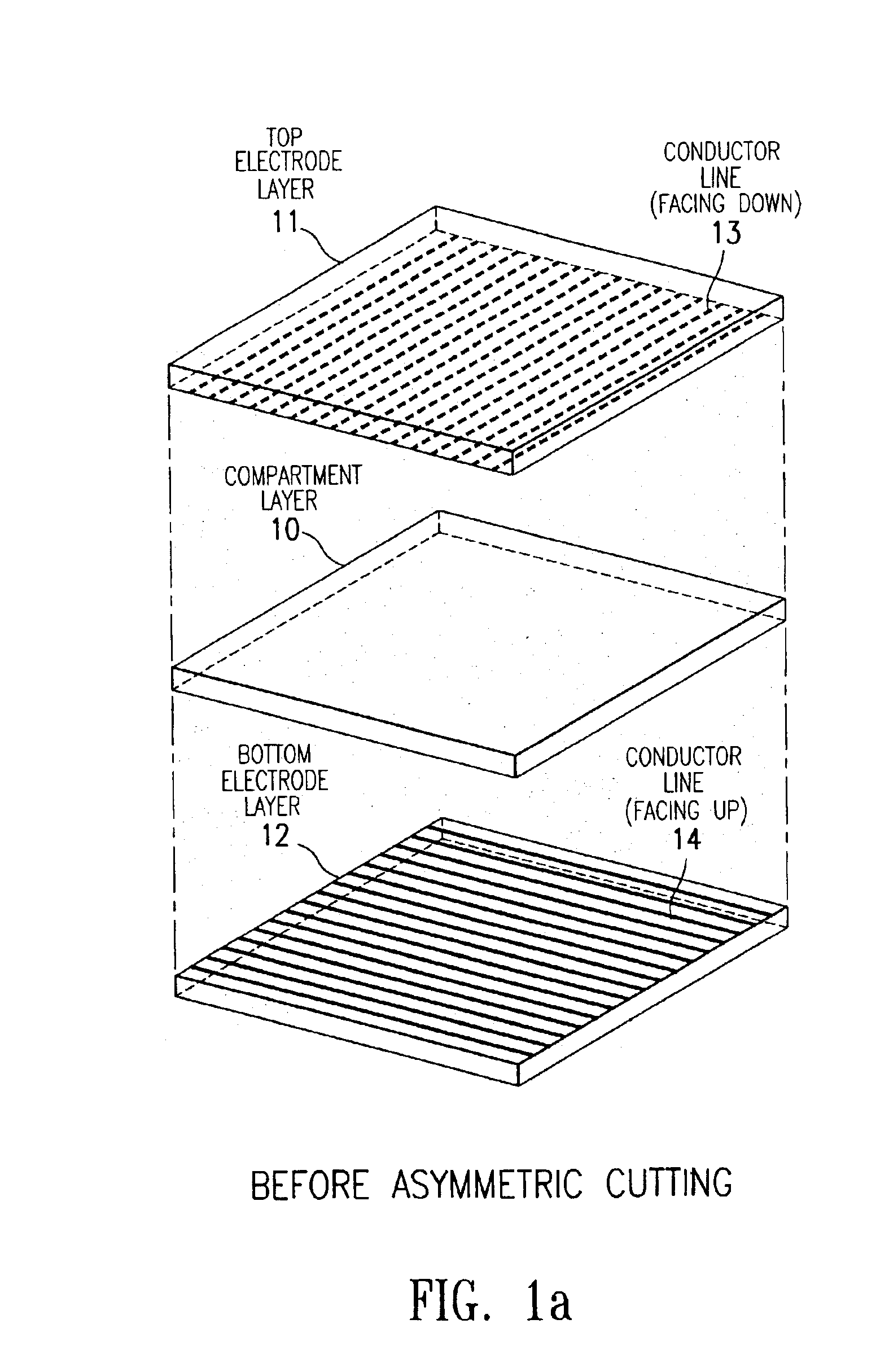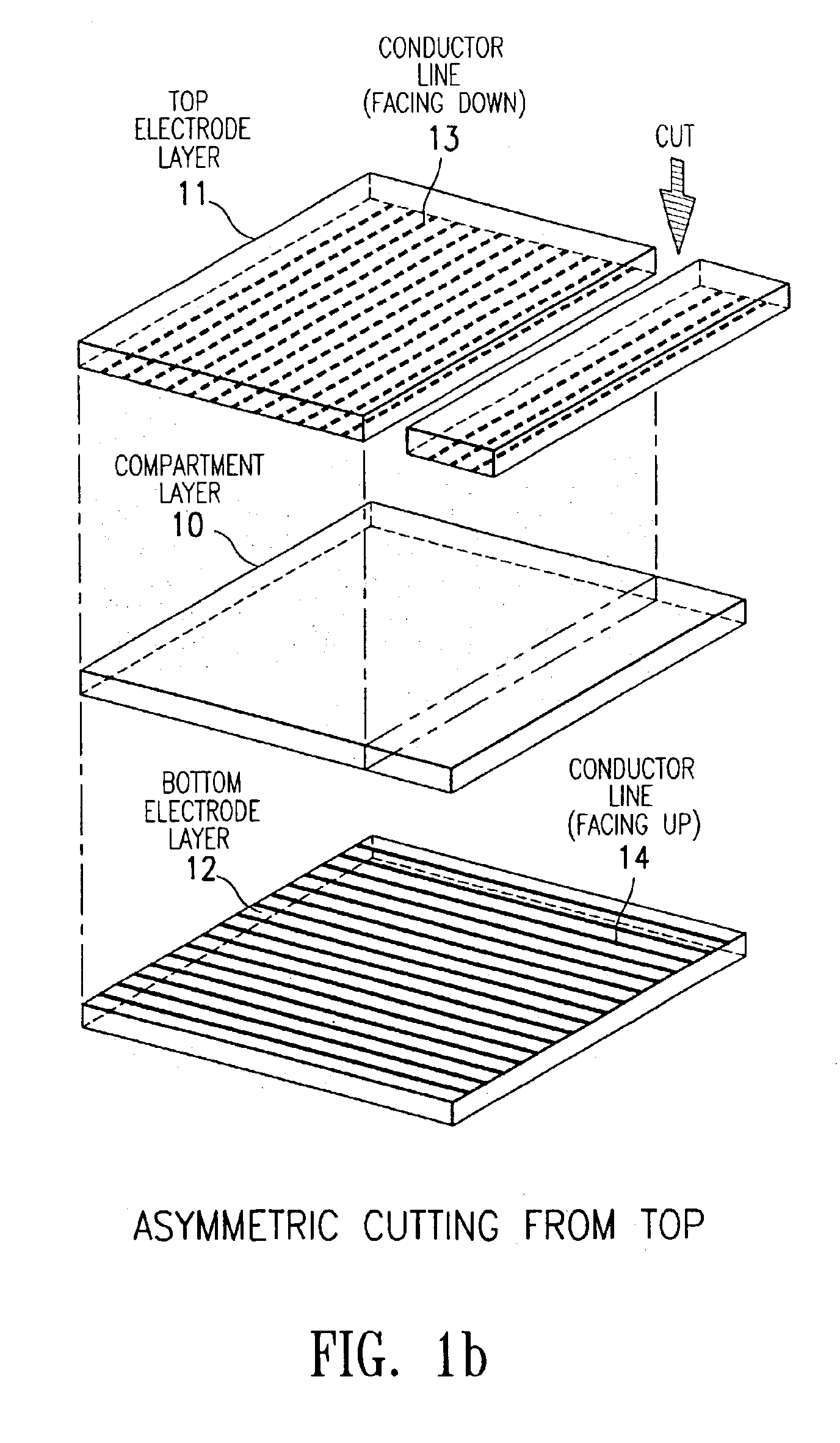Compositions and processes for format flexible, roll-to-roll manufacturing of electrophoretic displays
- Summary
- Abstract
- Description
- Claims
- Application Information
AI Technical Summary
Benefits of technology
Problems solved by technology
Method used
Image
Examples
example 1
I. Preparation of Strippable Primer Composition
Solution (a)
33.2 Grams of EB 600™ (UCB, Smyrna, Ga.), 16.12 gm of SR 399™ (Sartomer, Exton, Pa.), 16.12 gm of TMPTA (UCB, Smyrna, Ga.) and 20.61 gm of HDODA (UCB, Smyrna, Ga.) were added into a 250 gm plastic round bottle. The mixture was stirred with a general purpose blade at 500 RPM for 30 minutes.
Solution (b)
2 Grams of lrgacure™ 369 (Ciba, Tarrytown, N.Y.) and 1 gm of Irganox™ 1035 were combined into a glass bottle containing 10 gm of MEK (Fisher, Pittsburgh, Pa.). The mixture was sonicated (FS-220H, Fisher, Pittsburgh, Pa.).
Solution (c)
44.35 Grams of polyethylmethacrylate (Aldrich, Milwaukee, Wis.) and 389.15 gm of MEK were combined into a 1 liter plastic bottle and the mixture was stirred with a 1″ general purpose blade at 500 rpm for 60 minutes.
Solutions (a) and (b) prepared above were added into solution (c) contained in a 1 liter bottle, and the mixture was stirred with a 1″ general purpose blade at 500 rpm for 30 minutes. This...
example 2
The procedure of Example 1 was followed except that the UV-strippable adhesive used in section I was replaced by a pressure sensitive adhesive Dura-tak-1105 (National Starch and Chemical Co., Bridgewater, N.J.) and the UV curing step was skipped in the lamination step. The resulting device was tested and found to have adequate contrast at low voltages.
example 3
The procedure of Example 1 was followed, except that in the preparation of the strippable primer layer composition in section I, polyethylmethacrylate (Aldrich, Milwaukee, Wis.) was replaced with Carboset 515 (BF Goodrich, Cleveland, Ohio).
PUM
| Property | Measurement | Unit |
|---|---|---|
| Solubility (mass) | aaaaa | aaaaa |
| Area | aaaaa | aaaaa |
| Mechanical properties | aaaaa | aaaaa |
Abstract
Description
Claims
Application Information
 Login to View More
Login to View More - R&D
- Intellectual Property
- Life Sciences
- Materials
- Tech Scout
- Unparalleled Data Quality
- Higher Quality Content
- 60% Fewer Hallucinations
Browse by: Latest US Patents, China's latest patents, Technical Efficacy Thesaurus, Application Domain, Technology Topic, Popular Technical Reports.
© 2025 PatSnap. All rights reserved.Legal|Privacy policy|Modern Slavery Act Transparency Statement|Sitemap|About US| Contact US: help@patsnap.com



